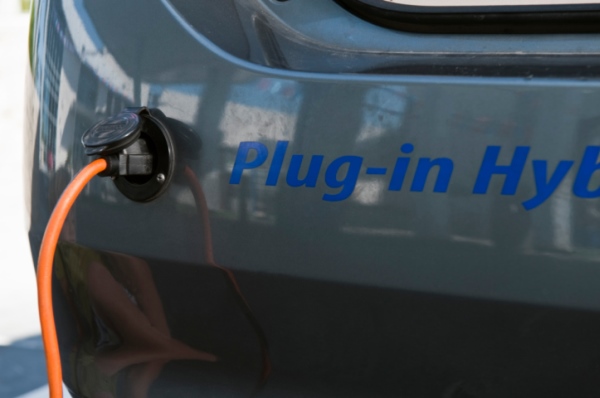Light duty gasoline vehicles like hybrid electric, plug-in hybrid electric and all-electric have seen a steady sales climb since they became in available in 1999. Just 9,400 hybrid electric vehicles were sold in 2000, compared to more than 340,000 in 2018, according to the U.S. Bureau of Transportation.
There are a few reasons for the sales spike. Hybrid and electric vehicles are deemed more energy efficient, produce few emissions and can reduce fuel costs. If you’re looking to potentially make your commute more eco-friendly by purchasing a hybrid or electric vehicle, be sure to gather as much information as you can beforehand.
Check out this hybrid and electric vehicles guide that will explain the difference between the various “green” vehicles, the pluses and minuses of each and the types of vehicles that are available to you.
What Is A Hybrid Car?
Definition: Hybrid electric vehicles combine an electric motor and gasoline engine (hence the term, “hybrid”). The vehicle offers a “best of both worlds” solution because electric motors are three times as efficient as gasoline engines. Meanwhile, gas possesses more energy and runs less expensively than batteries. However, when a gas engine and electric motor work in tandem, hybrids can run on the latter when it is most efficient without wasting the gasoline’s engine’s efficiency, and vice versa.
There are two types of hybrids—mild and full. Mild (also called micro) hybrids use a battery and electric motor to help power the car. The vehicle’s engine can also turn off when the vehicle stops to allow for even better fuel economy. The mild hybrid cannot run on just electricity, however.
Full hybrids meanwhile have bigger batteries, more powerful electric motors and are gas-powered. This combination can power the vehicle for short distances and slow speeds. Full hybrid vehicles also have a rechargeable battery and are more fuel-efficient.
Pros: Hybrids use both gas and electricity, offering superior energy efficiency.
Cons: The cost—hybrid technology makes the vehicles more expensive than conventional cars. Fuel savings and state incentives could offset some of those costs, however. Check out the U.S. Depart of Energy’s “Can a Hybrid Save Me Money?” tool to do a side-by-side comparison between a hybrid and its conventional counterpart.
Examples: Toyota Corolla LE, Ford Fusion, Honda Accord and Toyota Highlander.
Plug-in hybrid electric vehicles (PHEVs)
Pros: PHEVs are great for shorter trips. If your ride is within the vehicle’s electric-only range, you won’t have to use as much gas.
Cons: The “electric only” mileage range is limited. You’ll have to recharge your PHEV often if you want to maximize the electric only option. Otherwise, gasoline is fueling most of your miles, which defeats the purpose of having a hybrid in the first place.
Examples: The Subaru Crosstrek Plug-In Hybrid and Toyota Prius Prime are traditional PHEVs. The BMW i3 and Chevrolet Volt meanwhile are “range extenders”, meaning they are more like all-electric vehicles (more on those in a moment) and have an onboard generator that works like an engine. This engine kicks in after the vehicle’s rechargeable battery runs out in order to produce electricity.
All-electric vehicles
Definition: All-electric vehicles rely solely on battery packs to store the electric energy needed to power the car’s motor. The batteries are also charged with an electric power source—most drivers can use a 110-volt outlet to recharge their vehicle every few days (versus buying and installing a 240-volt charger).
Pros: All-electric vehicles are eco-friendly—they cause less pollution and have lower emissions than conventional vehicles. They are also good for short trips, especially for drivers who travel less than 40 miles per day. That average daily mileage will keep drivers from having to recharge their vehicle as often.
Cons: These vehicles can cost thousands more than traditional vehicles. Much like hybrids however, federal and state incentives as well as lower fuel and maintenance costs can help lower the money paid upfront for the vehicle. The other downside is drivers with longer commutes may find themselves recharging their vehicle more often since it does not have the gasoline backup that hybrids do.
Examples: Nissan Leaf, Chevy Bolt, Tesla Model 3 and Kia Niro.
Should you buy a hybrid or electric vehicle new or used?
The downside of buying new of course is your vehicle depreciates the second you drive it off of the lot. If depreciation is your main concern, consider buying a used vehicle. Just be sure to check the car’s reliability ratings—as well as the battery pack’s reliability. Also keep in mind that the federal tax incentive previously mentioned only applies to vehicles that are purchased new.
No matter what kind of vehicle you choose, make sure to insure it with a company you can trust. GEICO has been saving people money and providing outstanding customer service for 80 years. Get a car insurance quote today.
By Joe Dyton
